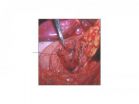(Press-News.org) Here's yet another reason to focus on kids' early years. Children who grow up in well-managed households, enjoy school, and have friends who stay out of trouble report fewer sexually transmitted diseases in young adulthood, according to a new analysis.
The findings, from University of Washington longitudinal surveys of nearly 2,000 participants, suggest that efforts to curb the spread of sexually transmitted diseases should begin years before most people start having sex.
"Pay less attention to the sex aspect of this and think of the larger context," is lead author Marina Epstein's advice to parents and educators.
"Kids don't engage in risky behaviors in a vacuum, there are environmental opportunities that have to be created," she said. "Monitor your kid more generally, make sure they're engaged in school and have friends who don't get into trouble."
Epstein is a researcher at the UW's Social Development Research Group. The new study, funded by the National Institute on Drug Abuse, was recently published online and will appear in an upcoming issue of the Journal of Adolescent Health.
Much is known about how to prevent STDs – wear condoms, limit your sexual partners, don't have sex while under the influence of drugs or alcohol – yet they are the most common type of infection in the U.S. Young adults ages 15 to 24 account for half of new cases, according to a previous study.
"A lot of prevention happens after the fact," said co-author Lisa Manhart, an associate professor of epidemiology at the UW Center for AIDS and STD. "Either youth are already having risky sex by the time they hear prevention messages, or they're in an STD clinic because they think they have an STD and someone is saying 'here are some things you can do to not get another one.'"
Prevention programs promoting abstinence or delay of sexual activity have had mixed results in reducing STDs. "When they are effective, it is very short term. Like dieting," Manhart said. "What we don't do often in the STD prevention world is think about why people engage in sex early, why they don't use condoms, and what drives these risky behaviors."
The UW team looked at what else might be at play.
Becoming sexually active early in life is commonly linked to contracting an STD. So the researchers looked for factors shared by youth who became sexually active early – younger than age 15, as measured in Epstein's study.
The data came from two longitudinal youth development studies – Seattle Social Development Project and Raising Healthy Children – that began in the mid-1980s and early 1990s in urban and suburban schools in the Seattle area.
At age 24, participants from both studies had averaged eight sexual partners in their lifetimes and around a fifth said that they had been diagnosed with an STD, including herpes, syphilis, gonorrhea, chlamydia or HIV/AIDS.
Of youth in the study who became sexually active before age 15, more – about a third – had an STD compared with about 16 percent of those who were older when they started having sex.
Having more sexual partners was directly related to both early initiation of sexual activity and STD diagnosis. Having sex after drinking alcohol or using drugs was also related to STDs among youth in the Raising Healthy Children study.
In addition to the standard risky behaviors, researchers examined survey data from the participants' childhoods, when they were ages 10 to 14. Included were parent responses to questions about how closely they monitor their kids and whether they establish rules, discipline and rewards. In families that were well-managed, youngsters were less likely to have early sexual debuts.
School engagement – how much kids between ages 10 and 14 liked school, their teachers and schoolwork – also buffered against sexual activity at young ages. But having childhood friends who got into trouble with teachers or police or who were in gangs increased the risk for early sexual activity.
"We spent millions of dollars, with little success, on teaching adolescents that abstinence until marriage is best," Epstein said. "Most teenagers do end up having sex, and we would be better off spending that money preparing them to make healthy and responsible choices."
She recommends prevention efforts that take into account family dynamics and youth development.
"We already have good programs that have been shown to be effective at improving parent-child relationships and intervening with at-risk youth," Epstein said. "We should use our prevention dollars on programs that we know work and that show effects on a range of behaviors, including risky sex practices."
INFORMATION:
Other co-authors Jennifer Bailey, Karl Hill, J. David Hawkins, Kevin Haggerty and Richard Catalano are all affiliated with UW's Social Development Research Group.
For more information, contact Epstein at marinaep@uw.edu or 206-221-4659; Manhart at lmanhart@uw.edu or 206-744-3646; or Karl G. Hill, principal investigator of the research project, at khill@uw.edu or 206-685-3859.
Link to study: http://www.sciencedirect.com/science/article/pii/S1054139X13005144
Data on today's youth reveal childhood clues for later risk of STDs
2014-02-11
ELSE PRESS RELEASES FROM THIS DATE:
Targeting tumors: Ion beam accelerators take aim at cancer
2014-02-11
EVENT: Advances in the design and operation of particle accelerators built for basic physics research are leading to the rapid evolution of machines that deliver cancer-killing beams. Hear about the latest developments and challenges in this field from a physicist, a radiobiologist, and a clinical oncologist, and participate in a discussion about cost, access, and ethics at a symposium organized by the U.S. Department of Energy's Brookhaven National Laboratory ("Targeting Tumors: Ion Beam Accelerators Take Aim at Cancer") and at a related press briefing--both to be held ...
Nanoparticles treat muscular dystrophy in mice
2014-02-11
Researchers at Washington University School of Medicine in St. Louis have demonstrated a new approach to treating muscular dystrophy. Mice with a form of this muscle-weakening disease showed improved strength and heart function when treated with nanoparticles loaded with rapamycin, an immunosuppressive drug recently found to improve recycling of cellular waste.
The study appears online in The FASEB Journal.
The investigators, including first author Kristin P. Bibee, MD, PhD, looked at a mouse model of Duchenne muscular dystrophy, the most severe inherited form of the ...
Child abuse rises with income inequality, study shows
2014-02-11
ITHACA, N.Y. – As the Great Recession deepened and income inequality became more pronounced, county-by-county rates of child maltreatment – from sexual, physical and emotional abuse to traumatic brain injuries and death – worsened, according to a nationwide study by Cornell University.
The income inequality-child maltreatment study, to be published in the March 2014 edition of the peer-review journal Pediatrics, covers all 3,142 American counties from 2005-09, and is one of the most comprehensive of its kind and the first to target child abuse in places with the greatest ...
I smoke, but I'm not a smoker
2014-02-11
While smoking among California adults has dramatically declined in recent decades, researchers at the University of California, San Diego School of Medicine report there is a surprisingly large number of people who say they use cigarettes, but don't consider themselves to be "smokers."
Writing in the February 5 online issue of Tobacco Control, Wael K. Al-Delaimy, MD, PhD, professor and chief of the Division of Global Health in the UC San Diego Department of Family and Preventive Medicine, and colleagues estimate that, in 2011, almost 396,000 Californians (12.3 percent ...
Dartmouth study provides first global evidence that foreign aid boosts public opinion
2014-02-11
A study by Dartmouth and Australian researchers provides the first empirical evidence using data from a variety of countries that foreign aid can greatly improve foreign public opinion of donor countries.
The findings are based on a U.S. foreign aid program targeting HIV and AIDS -- the President's Emergency Plan for AIDS Relief (PEPFAR) -- that has substantially improved public perception of the United States in the more than 80 developing countries receiving the aid. But the findings have broader policy implications for an emerging international order in which major ...
Game changer: Biomarker identified for noncancerous pancreatic cysts
2014-02-11
INDIANAPOLIS -- Researchers at the Indiana University School of Medicine have discovered a highly accurate, noninvasive test to identify benign pancreatic cysts, which could spare patients years of nerve-racking trips to the doctor or potentially dangerous surgery.
The findings are reported in "Vascular Endothelial Growth Factor, a Novel and Highly Accurate Pancreatic Fluid Biomarker for Serous Pancreatic Cysts" online in the Journal of the American College of Surgeons.
The test, which analyzes fluid from pancreatic cysts, can identify a common type of benign cyst that ...
New target isolated for leukemia drug development
2014-02-11
SAN ANTONIO (February 11, 2014) – There are potentially effective treatments for acute myeloid leukemia (AML), but they only work in 20 to 40 percent of cases. In a paper published today in Leukemia, a Nature journal, a UT Health Science Center researcher has pinpointed a protein that could play a key, previously unknown role in the development of pediatric AML — promising new information in the quest to treat and cure childhood leukemias.
AML starts at the point when cells mature into different kinds of blood cells. In AML, the cancerous cells grow and proliferate in ...
No clowning around: Juggling sheds light on how we run
2014-02-11
Juggling may seem like mere entertainment, but a study led by Johns Hopkins engineers used this circus skill to gather critical clues about how vision and the sense of touch help control the way humans and animals move their limbs in a repetitive way, such as in running. The findings eventually may aid in the treatment of people with neurological diseases and could lead to prosthetic limbs and robots that move more efficiently.
The study was published online recently by the Journal of Neurophysiology and will be the cover article in the journal's March 2014 print edition.
In ...
EU rules are denying children latest cancer drugs
2014-02-11
Children with cancer are being denied new, potentially life-saving drugs, because EU rules are allowing companies to trial some drugs only in adults, leading cancer experts warn today.
Changes to how EU rules are implemented could allow children access to a goldmine of potential cancer drugs which have currently only been tested in adults – by making it more difficult for pharma companies to avoid testing them in under-18s too.
Under the current system, pharma companies often gain exemptions from carrying out expensive testing of cancer drugs in patients under the age ...
Heart attack research discovers new treatment target
2014-02-11
New Orleans, LA – Research led by David Lefer, PhD, Professor and Director of the Cardiovascular Center of Excellence at LSU Health Sciences Center New Orleans School of Medicine, demonstrates for the first time cross-talk between two protective signaling molecules during a heart attack. By providing new and important information about the mechanisms involved in heart attacks and organ transplantation, the research identifies a potential new treatment target for heart disease. The paper will be published in Proceedings of the National Academy of Sciences (PNAS) Online Early ...



